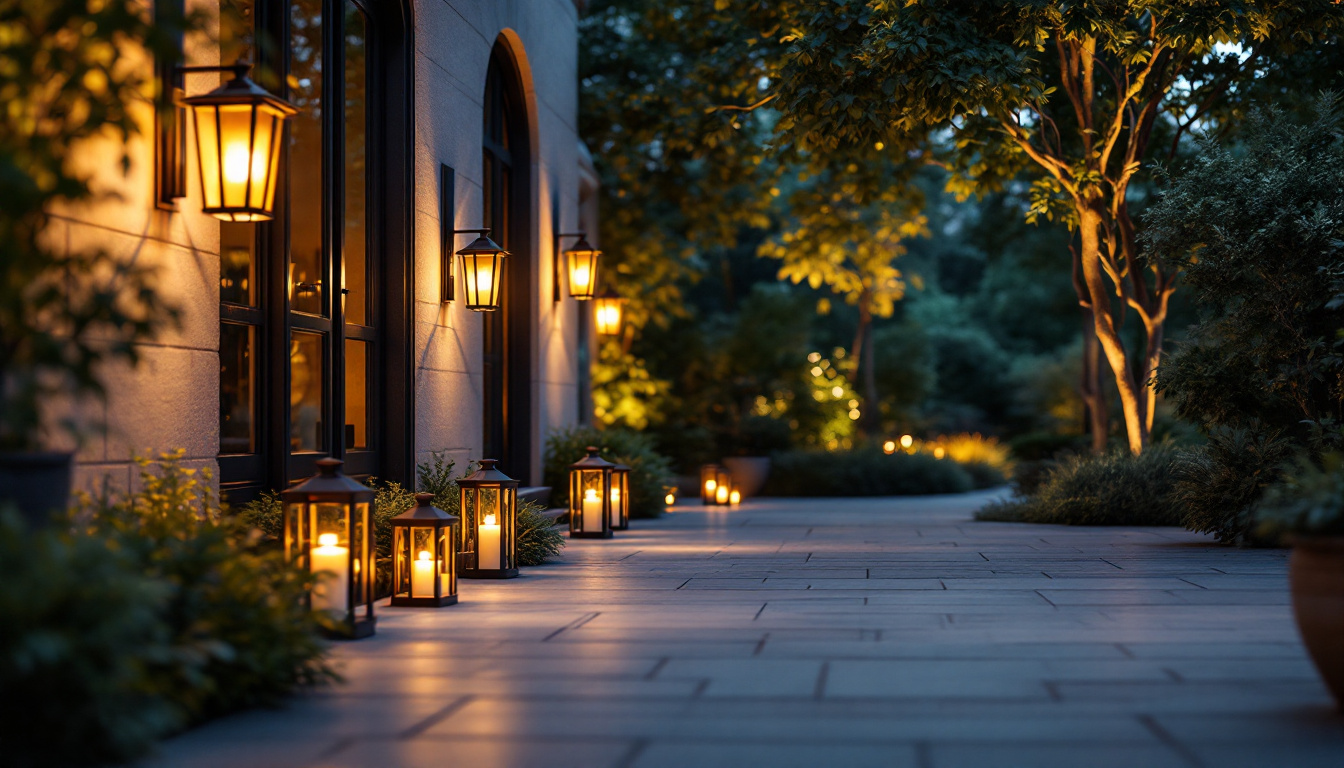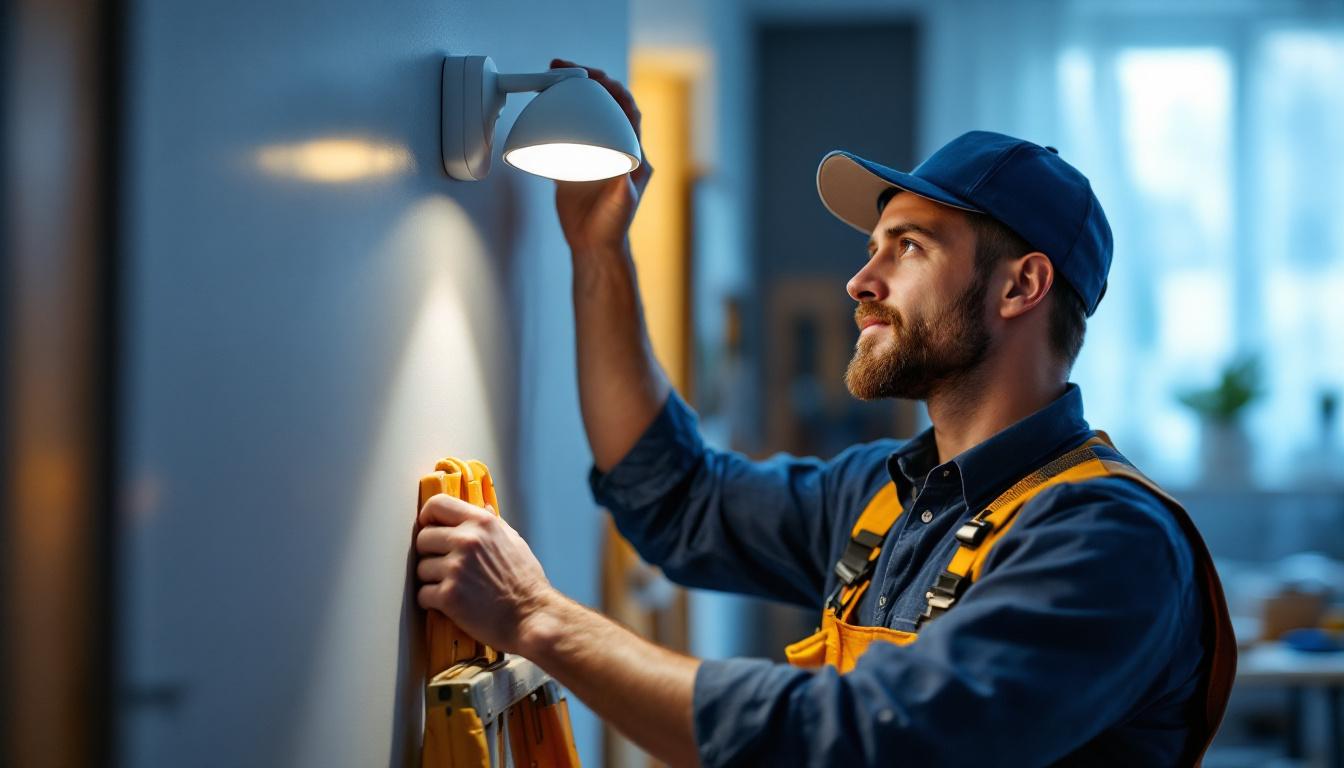
Carriage lamps, often referred to as lanterns, have become a popular choice for outdoor lighting, especially in residential settings. They evoke a sense of nostalgia while providing functional illumination. For lighting contractors, understanding the nuances of these fixtures is essential for delivering quality installations that meet client expectations.
These lamps are not just about aesthetics; they also play a crucial role in enhancing safety and security around properties. This article aims to provide expert advice on selecting, installing, and maintaining carriage lamps, ensuring that contractors can offer the best solutions to their clients.
Historically, carriage lamps were used to light the way for horse-drawn carriages, illuminating paths and driveways in a time when gas and oil were the primary sources of light. Today, they come in various styles, from traditional wrought iron designs to sleek, modern finishes, allowing homeowners to choose fixtures that complement their architectural style. Additionally, advancements in LED technology have made these lamps more energy-efficient, providing brighter illumination while reducing electricity costs. This blend of historical charm and modern efficiency makes carriage lamps an appealing choice for many homeowners looking to enhance their outdoor spaces.
Moreover, the placement of carriage lamps can significantly impact the ambiance of a property. Strategically positioned, they can highlight landscaping features, guide guests along walkways, and create a warm, inviting atmosphere. For contractors, understanding the ideal height and spacing for these fixtures is vital for maximizing their effectiveness. Furthermore, incorporating smart technology, such as motion sensors or timers, can add an extra layer of convenience and security, ensuring that the lights are only on when needed. By considering these factors, contractors can provide tailored solutions that not only meet the functional needs of their clients but also elevate the overall aesthetic appeal of their outdoor environments.
When it comes to carriage lamps, there are several types available, each with its unique features and benefits. Understanding these variations is crucial for making informed recommendations to clients.
Traditional carriage lamps are often designed to mimic the look of old-fashioned gas lamps. They typically feature ornate designs and are made from materials such as cast iron or brass. These lamps are ideal for historical homes or properties that aim to maintain a classic aesthetic.
While they provide a charming appearance, traditional carriage lamps may require more maintenance due to their materials and design intricacies. Contractors should advise clients on the importance of regular upkeep to preserve the lamp’s appearance and functionality. Additionally, these lamps can be fitted with modern lighting solutions, such as LED bulbs, which can enhance their efficiency while retaining their vintage charm. This blend of old and new can be particularly appealing to homeowners who appreciate the nostalgia of traditional designs but also want to benefit from contemporary technology.
In contrast, modern carriage lamps offer a sleek and contemporary design. These fixtures often incorporate energy-efficient LED technology, making them a practical choice for homeowners looking to reduce energy costs. Their minimalist designs can complement a variety of architectural styles, from mid-century modern to contemporary builds.
Contractors can highlight the benefits of modern carriage lamps, such as their longevity and lower maintenance requirements, which can be appealing to clients focused on practicality and sustainability. Furthermore, many modern designs come equipped with smart technology, allowing homeowners to control lighting through mobile apps or voice commands. This integration of technology not only enhances convenience but also adds a layer of security, as homeowners can program their lights to turn on and off at specific times, deterring potential intruders.
Solar-powered carriage lamps are an excellent option for environmentally conscious homeowners. These lamps harness solar energy during the day and illuminate at night without the need for electrical wiring. They are perfect for gardens, pathways, and other outdoor spaces where access to power sources may be limited.
For lighting contractors, it is essential to educate clients about the placement of solar lamps. Adequate sunlight exposure is crucial for optimal performance, so advising clients on strategic placement can enhance their satisfaction with the product. Additionally, solar-powered options often come with built-in motion sensors, which can provide added security by illuminating pathways when someone approaches. This feature not only enhances safety but also adds a welcoming ambiance to outdoor spaces, making them more enjoyable for evening gatherings or quiet nights under the stars.
Selecting the appropriate carriage lamp involves various considerations. Lighting contractors should guide clients through the decision-making process, ensuring they choose fixtures that align with their needs and preferences.
The architectural style of a home plays a significant role in determining the right carriage lamp. For instance, a Victorian-style home may benefit from ornate, traditional lamps, while a contemporary home might look better with sleek, modern fixtures. Contractors should assess the overall design of the property and recommend lamps that enhance its aesthetic appeal.
Additionally, color and finish are essential factors. A lamp’s finish should harmonize with the home’s exterior colors and materials, creating a cohesive look. Offering a range of options can help clients visualize how different styles will complement their homes.
Functionality is another critical aspect to consider. Carriage lamps can serve various purposes, from providing ambient lighting to enhancing security. Contractors should discuss the primary use of the lamps with clients. For example, if security is a priority, recommending brighter lamps or those with motion sensors may be beneficial.
Furthermore, the location of the lamps is vital. Areas such as driveways, entrances, and patios may require different levels of illumination. Understanding the specific needs of each space allows contractors to make tailored recommendations that enhance both safety and aesthetics.
With the growing emphasis on sustainability, energy efficiency should be a top consideration when selecting carriage lamps. LED options are not only more energy-efficient but also have a longer lifespan compared to traditional incandescent bulbs. Contractors should inform clients about the long-term savings associated with energy-efficient lighting solutions.
Additionally, incorporating smart technology can further enhance energy efficiency. Smart carriage lamps can be controlled remotely, allowing homeowners to adjust brightness levels or set schedules for illumination. Educating clients on these advancements can set contractors apart as knowledgeable professionals in the field.
Before installation, it is essential to plan the layout of the carriage lamps. This involves determining the optimal locations for placement, taking into account the areas that require illumination and the overall design of the space. Contractors should consider factors such as the height at which the lamps will be mounted and the distance between fixtures.
Creating a lighting plan can help visualize the final outcome and ensure that all areas are adequately lit. This step also allows for adjustments before any physical work begins, saving time and resources.
For electrically powered carriage lamps, adhering to electrical codes and safety standards is paramount. Contractors should ensure that all wiring is properly installed and secured, minimizing the risk of electrical hazards. It is advisable to consult local codes and regulations to ensure compliance.
Moreover, using weather-resistant materials and fixtures is essential for outdoor installations. This not only enhances the longevity of the lamps but also ensures safety in various weather conditions.
Once the installation is complete, testing the lamps is crucial. Contractors should check for proper functionality, ensuring that all fixtures illuminate as intended. If any issues arise, adjustments should be made promptly to avoid client dissatisfaction.
Additionally, providing clients with guidance on how to operate and maintain their new carriage lamps can enhance their overall experience. Offering tips on bulb replacement, cleaning, and troubleshooting can establish a positive relationship and foster trust.
Over time, carriage lamps can accumulate dirt, dust, and grime, which can diminish their brightness and aesthetic appeal. Contractors should recommend a cleaning schedule, emphasizing the importance of using non-abrasive cleaners and soft cloths to avoid damaging the fixtures.
For traditional lamps, special attention should be given to the materials used. For instance, brass fixtures may require polishing to maintain their shine, while painted surfaces may need touch-ups to prevent rust and corrosion.
Regular inspections can help identify any potential issues before they become significant problems. Contractors should encourage clients to check for signs of wear and tear, such as frayed wiring, cracked glass, or loose fixtures. Addressing these issues promptly can prevent costly repairs and ensure the safety of the lighting system.
Additionally, advising clients on seasonal maintenance, such as preparing lamps for winter weather, can enhance their longevity. Simple steps like removing debris and ensuring proper drainage can protect the fixtures from damage.
Carriage lamps offer a unique blend of style and functionality, making them a popular choice for outdoor lighting. For lighting contractors, understanding the various types, selection criteria, installation best practices, and maintenance tips is essential for delivering exceptional service to clients.
By providing expert advice and tailored solutions, contractors can help homeowners choose the perfect carriage lamps that enhance their property’s beauty while ensuring safety and efficiency. Staying informed about the latest trends and technologies in outdoor lighting will further establish contractors as trusted professionals in the industry.
Ready to elevate your lighting projects with the finest carriage lamps on the market? Look no further than LumenWholesale, where we provide lighting contractors with exceptional, spec-grade lighting products at unparalleled wholesale prices. Say goodbye to local distributor markups and hello to a vast selection of industry-standard, high-performance lighting solutions. With LumenWholesale, bulk buying is a breeze, thanks to our free shipping policy, ensuring you receive premium lighting at the best value — transparently and efficiently. Enhance the beauty and functionality of your outdoor spaces today by visiting Wholesale Lighting at the Best Value and discover the LumenWholesale difference.

Discover innovative hacks for smart lighting contractors to enhance their projects with motion-activated light fixtures.

Discover how LED light rolls are revolutionizing the lighting industry for contractors.

Discover essential tips for lighting contractors to prevent common outlet dryer issues.

Illuminate your projects with precision! Discover the top 4 LED shop lights perfect for lighting contractors.